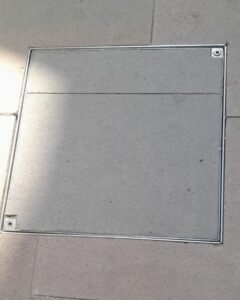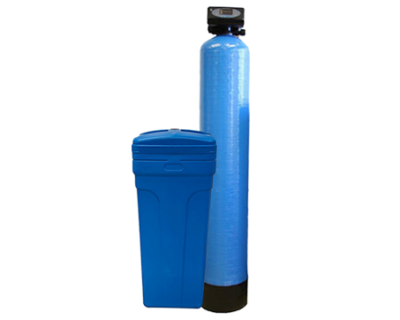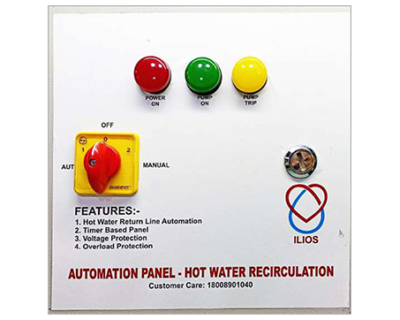
Essential Tips for Selecting the Perfect Manhole Covers
Manhole covers are an essential component of urban infrastructure, providing access to underground utilities such as sewage systems, electrical conduits, and telecommunication lines. While they may seem like simple, functional items, selecting the right manhole covers requires careful consideration. For those unfamiliar with their various types, dimensions, and materials, this decision can be quite challenging. However, making the correct choice is crucial, as using the wrong manhole cover or failing to replace a damaged one can lead to significant costs, safety hazards, and inconvenience.

What Are Manhole Covers?
Manhole covers are flat, removable plates that cover the opening of a manhole, providing access to underground systems. They are designed to prevent unauthorized entry, keep out debris, and ensure safety by covering the often hazardous holes in roads, pavements, and other surfaces.
Why Are Manhole Covers Important?
Manhole covers play a vital role in maintaining the safety and functionality of our cities. They protect pedestrians and vehicles from falling into open manholes, prevent debris from clogging the underground systems, and provide secure access for maintenance workers. A damaged or missing manhole cover can lead to accidents, costly repairs, and potential legal liabilities.
Types of Manhole Covers
Manhole covers come in various types, each suited for specific environments and applications. Understanding the differences can help you select the right one for your needs.
- Solid Top Covers
These are the most common type of manhole covers, featuring a solid, flat surface. They are typically used in areas with heavy foot and vehicular traffic, such as roads and sidewalks. Solid top covers are highly durable and provide excellent protection against external elements.
- Recessed or Tray Covers
Recessed manhole covers have a tray-like structure that can be filled with the surrounding material, such as concrete, asphalt, or paving stones, to blend seamlessly with the surface. These are often used in areas where aesthetics are important, such as pedestrian zones, parks, and driveways.
- Drainage Covers
These covers have holes or slots that allow water to pass through while keeping out larger debris. They are commonly used in areas prone to flooding, such as parking lots, streets, and industrial zones. Drainage covers help prevent water accumulation and ensure proper drainage.
- Double Triangular Covers
These covers are designed with a triangular shape and come in pairs, fitting together securely. They are often used in areas requiring frequent access, as they are easier to open and close compared to other types. Double triangular covers are also known for their resistance to movement, even under heavy traffic.
Choosing the Right Material
The material of the manhole cover is a crucial factor in its durability, weight, and suitability for different environments. Here are the most common materials used in manhole covers:
- Cast Iron
Cast iron is the most traditional and widely used material for manhole covers. It is known for its strength, durability, and ability to withstand heavy loads, making it ideal for high-traffic areas. However, cast iron covers are also very heavy, which can make installation and maintenance more challenging.
- Ductile Iron
Ductile iron is similar to cast iron but has improved strength and flexibility due to its nodular graphite structure. It is less brittle and more resistant to impact, making it a popular choice for modern manhole covers. Ductile iron covers offer a good balance between durability and weight.
- Steel
Steel manhole covers are lighter and more affordable than cast iron or ductile iron covers. They are often used in areas with moderate traffic or where frequent access is required. However, steel covers may not be as durable in harsh environments and can corrode over time if not properly maintained.
- Composite Materials
Composite manhole covers are made from materials like fiberglass, plastic, or resin. They are lightweight, non-conductive, and resistant to corrosion, making them ideal for use in environments where weight or electrical conductivity is a concern. Composite covers are also available in a variety of colors and designs, offering more aesthetic options.
Sizing and Load Capacity
Selecting the correct size and load capacity is crucial to ensure the manhole cover meets the demands of its environment.
- Size
Manhole covers come in various sizes, typically ranging from 20 to 60 centimeters in diameter for round covers, and in similar dimensions for square or rectangular covers. The size you need depends on the dimensions of the manhole opening and the intended use. Always measure the manhole opening carefully before purchasing a cover to ensure a proper fit.
- Load Capacity
Load capacity refers to the weight that a manhole cover can safely support without being damaged or displaced. Manhole covers are classified into different load-bearing classes, such as:
A15: Suitable for areas with pedestrian traffic only.
B125: Suitable for sidewalks, pedestrian areas, and light vehicles.
C250: Suitable for areas with slow-moving vehicles, such as residential streets.
D400: Suitable for main roads, highways, and areas with heavy vehicular traffic.
E600 and F900: Suitable for extreme loads, such as airports, docks, and industrial zones.
Choosing the right load capacity is essential to ensure the safety and longevity of the manhole cover.
Conclusion
Choosing the right manhole covers is essential for ensuring the safety, functionality, and longevity of your infrastructure. By understanding the different types, materials, sizes, and load capacities available, you can make an informed decision that meets your specific needs. Remember that regular maintenance and timely replacement of damaged covers are just as important as selecting the right one.




